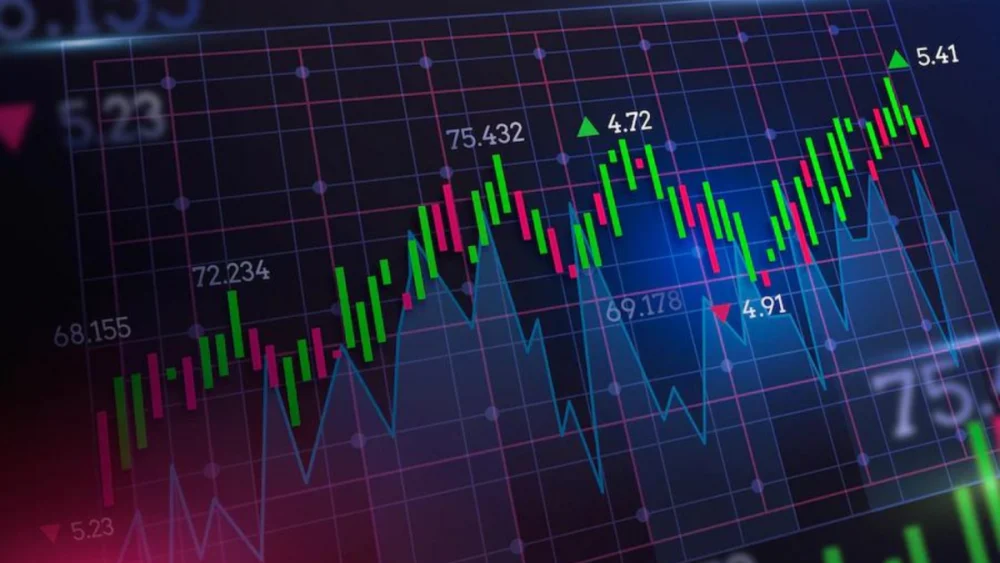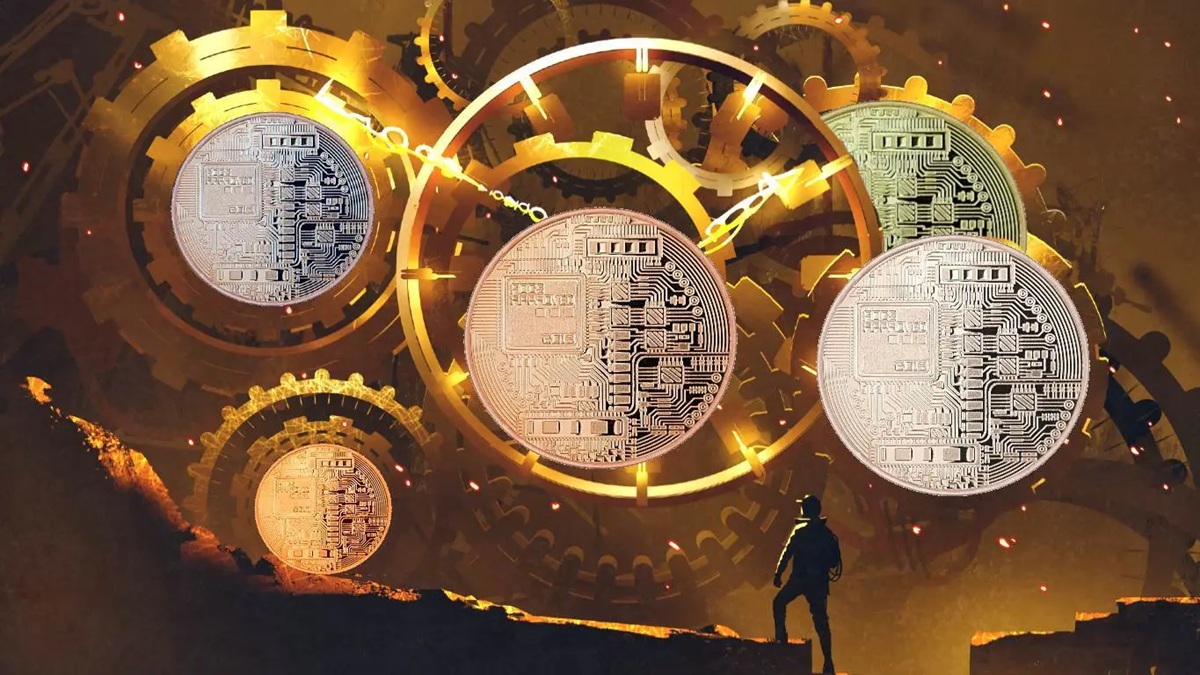Cyclically, we find ourselves in the middle of a cryptocurrency winter again. And as with previous crypto winters, critics and opponents argue that Bitcoin (BTC) is dead, can’t rise again, is a zero-ponzi scheme and will never recover. But meanwhile, analyst RJ Fulton shares two charts that he continues to buy Bitcoin, causing him to buy the biggest cryptocurrency. Here are the details…
The limited supply argument in Bitcoin, the most important thing
All the negative news in Bitcoin has been occurring since it was created in 2009, but all it has done since then is to go on a historical run and become the best performing asset in history. Bitcoin forces us to think about what money really is and how it should work. Bitcoin has been touted by some as a near-perfect form of currency. According to the analyst, despite the volatility seen as a feature of new assets that will eventually decline, there is reason to believe that Bitcoin will once again rise from the ashes and reward investors who hold it long and patiently.
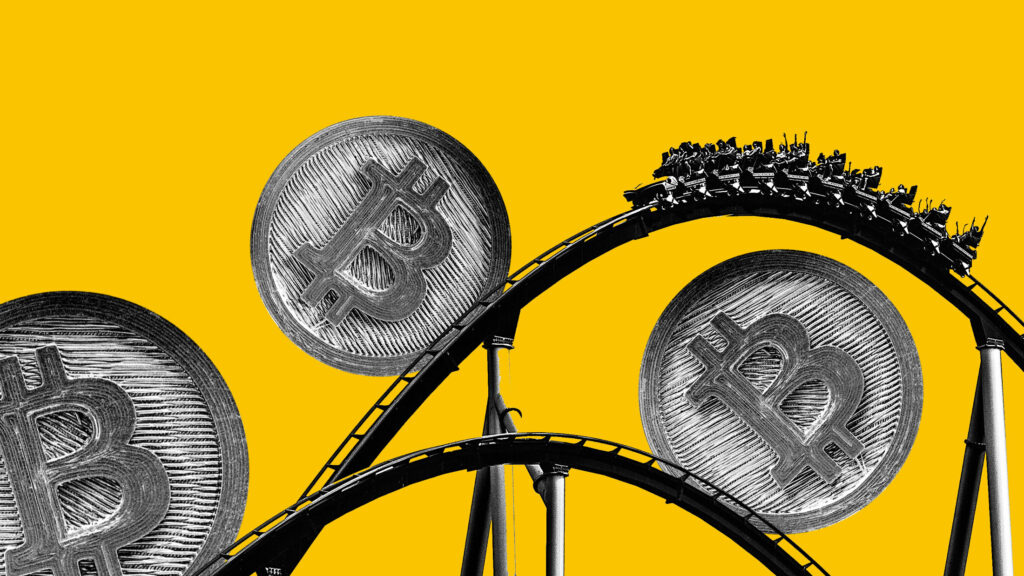
One of the key features of Bitcoin as solid money is its inherent scarcity. There is an ingrained limit in its code: There will be a maximum of 21 million Bitcoins in circulation. The only way this can be changed is if 51 percent of the nodes running the Bitcoin network agree. “I don’t think that will ever happen. This is one of the most important elements that make Bitcoin Bitcoin,” he says. This limited supply argument has helped boost the price of Bitcoin over the past 14 years.
Since 2009, demand for Bitcoin has only increased and will likely continue as it remains resilient, has proven to be a viable store of value, and as people around the world seek more robust forms of currency. To better illustrate the dynamics behind Bitcoin’s supply and demand, the analyst shares the charts below.
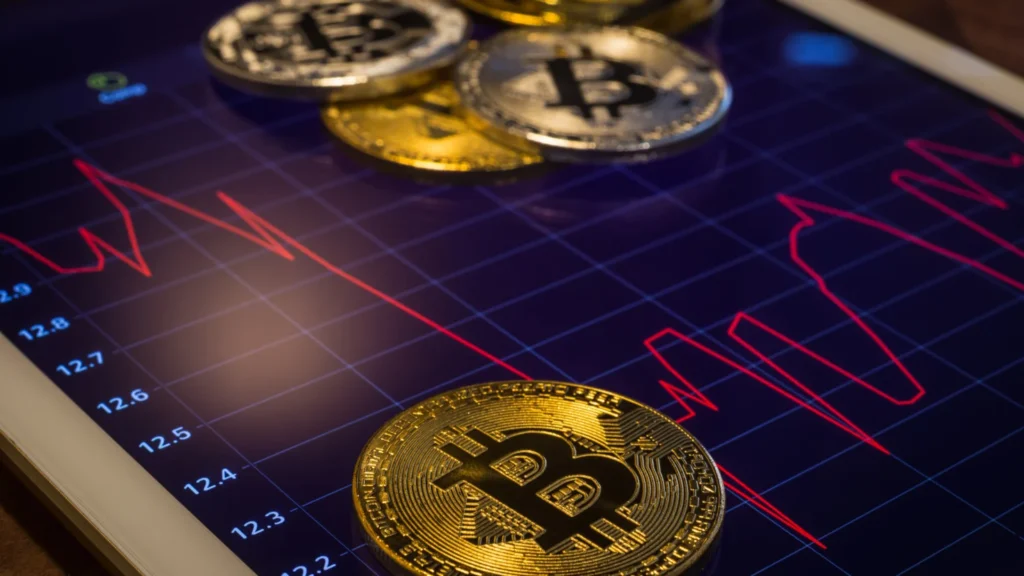
Chart 1: Increasing demand for cryptocurrencies
There are a handful of metrics that can be used to show the growth in demand for Bitcoin. You can see graphs for the number of active addresses (wallets that send or receive cryptocurrencies over a period of time), transaction volume, or activity on the Bitcoin Blockchain. However, the analyst says, “While he believes that Bitcoin may eventually become a viable currency for day-to-day transactions, most investors who support it today are interested in it as a store of value.” So, to capture the growing demand as a store of value, a graph of all Bitcoin addresses currently holding at least 0.01 Bitcoin shows as follows. The metric in question is currently sitting at an all-time high.
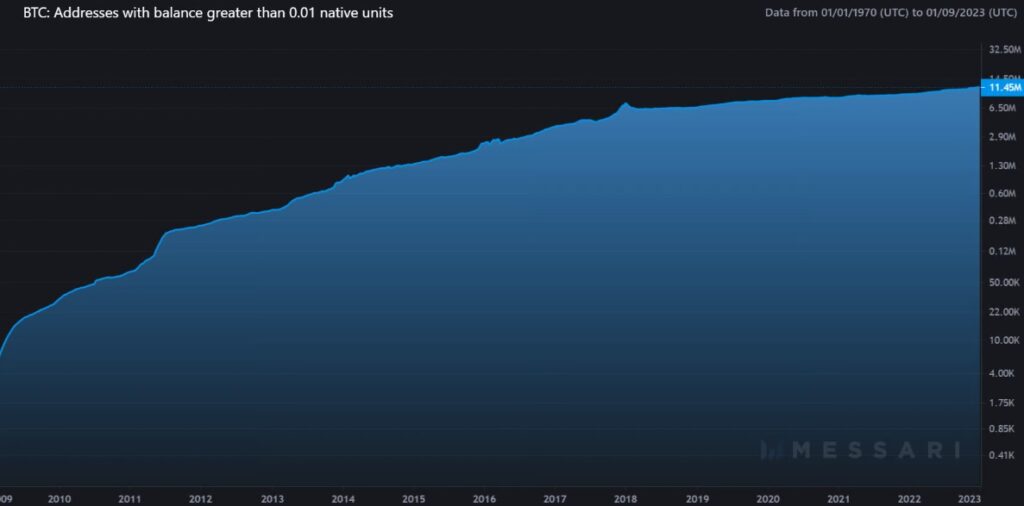
You will notice that the graph is displayed on a logarithmic scale. If drawn on a linear scale, the line would show a continuous rise from left to right. Unlike linear graphs, which you may be more used to viewing, logarithmic graphs are more suitable when you want to display wide ranges of values or describe the rate at which something is growing. The number of addresses holding at least 0.01 Bitcoin according to the chart increased in the earliest period of the token’s history, but has continued to rise since then, even in the midst of the current crypto winter. This metric, which stands at more than 11 million today, has increased 70 percent over the past five years and has risen 3,000 percent since 2013.
Chart 2: Outstanding supply
The chart below shared by the analyst shows Bitcoin’s declining supply-side growth. With only 21 million Bitcoins to be created, it could be enough to satisfy the appetite for increased demand – especially considering that around 91 percent of all Bitcoins have already been mined. Again, this graph is plotted on a logarithmic scale because it is more accurate in showing the rate of change. Rather than being inflationary, Bitcoin is considered a deflationary asset – a great quality for a store of value to have. Deflationary assets increase an individual’s purchasing power over time rather than decrease it. This is the opposite of almost every currency issued by the state.
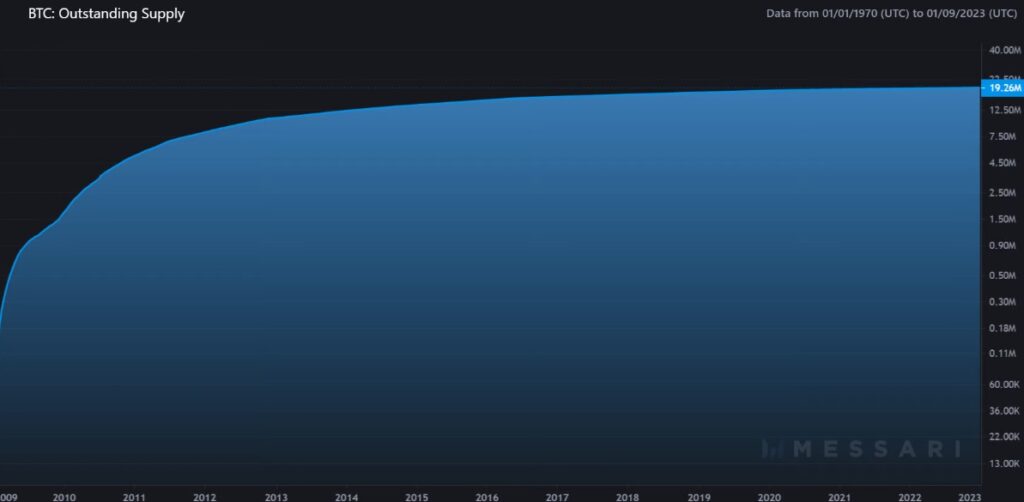
There are about 19.25 million Bitcoins in circulation today, and by the year 2140, when the last Bitcoin is mined, only 1.75 million more Bitcoins will enter the supply. Considering near-zero coin inflation, Bitcoin could benefit from increased demand and limited supply in the future. Thanks to increased demand, Bitcoin’s price has skyrocketed over the past decade and may rise again as it becomes more scarce. At least, the analyst states that he is currently a Bitcoin buyer because of this belief.

